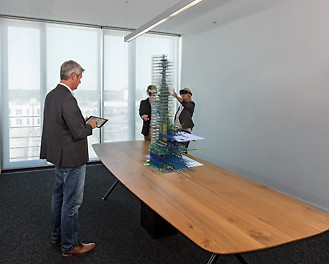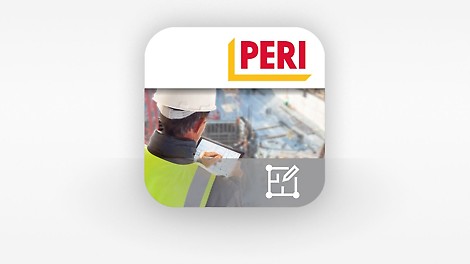
BIM Building Information Modeling
Construction is often complicated, with many stakeholders, specifications and variables to understand and manage. When considering the stakeholders alone, it is common to have developers, financers, architects, specialist planners, craft businesses, construction companies of all sizes, as well as various groups of builders, suppliers and operators involved.
Between developers, artchitects, consulting engineers and planners, changes to requirements and specifications can be multiple and varied. With each stakeholder handling these processes in their own environment, the risk of complications can soon arise. At the level of construction companies and equipment suppliers, the picture can become yet more complex, with multiple requests and sets of information passing many hands in different formats. The potential risk is the loss of information, a lack of clarity, time delays and, higher costs due to those involved in the process assuming different construction goals or planning stages.
At the same time, construction projects are becoming increasingly complex when integrating increased safety and environmental standards, and perhaps trialing new methods of construction. More and more legal requirements and new specialist disciplines are now integrated and generate large data volumes, formats and structures with different planning and project management instruments. The modern day complexity of construction can only be effectively handled using appropriate digital processes such as Building Information Modeling.

Utilising a 5D data model through BIM
BIM is bringing a much-needed change in planning and construction, based upon the practice in which planning, construction and operation of a building are recorded over its entire life cycle from concept to demolition. One definition of BIM is as follows:
“The consistent digitisation of all building information relevant to planning and implementation as a virtual building model. This method uses significantly more information than conventional models and creates a synchronised database that everyone involved in the construction process can access.”
To aid accurate communication amongst all stakeholders and to ensure a single-source of truth, the BIM for a project consistng of a 3D building or structure model can be consulted, from which various trade-related specialist models can be derived. This 3D data model draws from a central database. For example all floor plans, views and text-based project and product information details will be stored there.

Defining BIM
Building Information Modeling is made up of three terms which we interpret as:
Building: structures across civil engineering and infrastructure, residential and non-residential buildings and industrial structures
Information: a consistent, single point of information allowing everyone involved in the project to access and work on the same 3D data model
Modeling: the mapping of three-dimensional structures alongside the management of data models, partial models and specialist models. It includes the planning, organization, procurement and control of information.
The BIM advantage: build digitally first
- Security and certainty for large, complex projects
- Central data management with all project information
- Regulated communication through standardised working methods
- 3D visualisation of the construction project with links to information and documents
- Always current and available project information
- Simplified object monitoring
- Increase in quality through early detection of incorrect planning
- Reduction of construction costs
- Increasing occupational safety through system-supported approval processes
- Risk minimisation during construction
- Easy schedule monitoring during the construction phase
- Time savings throughout the entire construction process
- Reuse of information for building management

Bringing stakeholders together
Optimising the construction process offers building owners and everyone involved in the process transparent project management and a high level of planning security. The aim is uniform communication and transparency in the planning and construction process, as all stakeholders work on a model that is always up to date and loss of information can be avoided. The planning status is consistently visible to everyone. All components contained in BIM are precisely described in terms of their visual, technical and functional properties. Through the addition of time and cost data the 3D model has even greater potential for gains as a 5D resource.
The most important advantage of BIM is that planning and execution variants can be simulated on the 3D building model at an early stage of the project. It becomes clear to everyone involved in the construction where, when, why and at what cost interface problems can occur - in building planning as well as in the subsequent construction.

PERI supports the step into BIM
Digital engineering opportunities including the uptake of BIM whilst providing significant benefits, can present a risk. Uptake and adoption across the industry is happening at different speeds depending on the organisation and sector. In addition, the many products already on the market in this field can add additional complexity especially when choosing which tools to invest in as a business.
We can help with these complexities during your formwork and scaffolding design and supply stages. Regardless of the level of experience and maturity your organisation has in digital engineering, or the status of the other stakeholders in your project, we offer a flexible program of engineering services and software solutions for all of these stages within the planning and construction practice.
Developing formwork and scaffolding designs and solutions together with the customer from an early stage forms the basis for a comprehensive overall solution. Planning and coordination is more efficient, potential pitfalls are highlighted and resolved before they occur, and project schedule and costs can be better controlled. Within the BIM model and digital tools, all necessary construction processes are mapped and simulation of all formwork and scaffolding components in the application takes place. PERI takes over the planning coordination, creates safety checklists and provides relevant data for the assembly of the scaffolding and formwork as digitally available data to the construction site in real time. The associated automated collision check makes it clear at the planning stage which changes will be necessary in the formwork or scaffolding design and coordination, so that the entire work process can be carried out error-free on the construction site.
We provide three-dimensional visualisation of our designs if required, with assembly animations, and necessary plan changes are documented and tracked in a mobile construction information management system. Coud-based reporting functions enable collaboration across different locations and companies. The aim is to fully integrate the formwork and scaffolding solution into future BIM simulations.
Our BIM offer
- Visualisation of the formwork and scaffolding plans
- Geometric collision testing
- Transfer to conventional 2D plan representations for specialist planners
- Creation of material and parts lists
- Improvement of construction processes through three-dimensional visualisations and animated process simulations before the start of the project
- Efficient construction execution and cost transparency through optimised work preparation and the integration of additional process data
- A continuous, life-cycle planning and execution process that ranges from the new construction to the repair of buildings.

Components of our BIM offer
Digitilaisation of the construction industry is one of several subject areas we have a high focus on, to be able to offer our customers products and processes that control variables, reduce uncertainty and deliver time and cost benefits.
The range of digital products available today includes product-related apps for simple calculations of formwork and scaffolding systems, to the online customer portal myPERI which provides all customer documentation and information relating to ongoing projects.
Regarding data management at the design and execution phase, a communication and data management system with two applications is used: “Autodesk BIM 360 Glue” and “Autodesk BIM 360 Field”.
The PERI planning tools are integrated into Autodesk BIM 360 Glue via interfaces. This means everyone involved in the planning and construction process has access to the same information via easy-to-use interfaces. PERI drawings, documents, models and the 3D drawing program PERI CAD can also be accessed here.
Using Autodesk BIM 360 Glue, new requirements and solutions are communicated quickly across all stakeholders - from the project office to the construction supplier. This helps to reduce the risk of schedule collisions or capacity problems
Information from the planning phase is made available in the Autodesk BIM 360 Field coordination software. It offers the opportunity to transmit and document tasks, problems (issues), checklists, instructions, photos and reports for communication between the construction site and the office. Specific information about the structure or technical documents such as assembly and usage instructions for the formwork material used is also instantly available.
In order to optimise the delivery process, pre-assembled formwork units can be provided with QR codes. This means the material on site can be recorded and checked directly upon receipt of goods using the same software. In addition, deployment plans can be called up and positions for initial operations can be visualised on the building model.